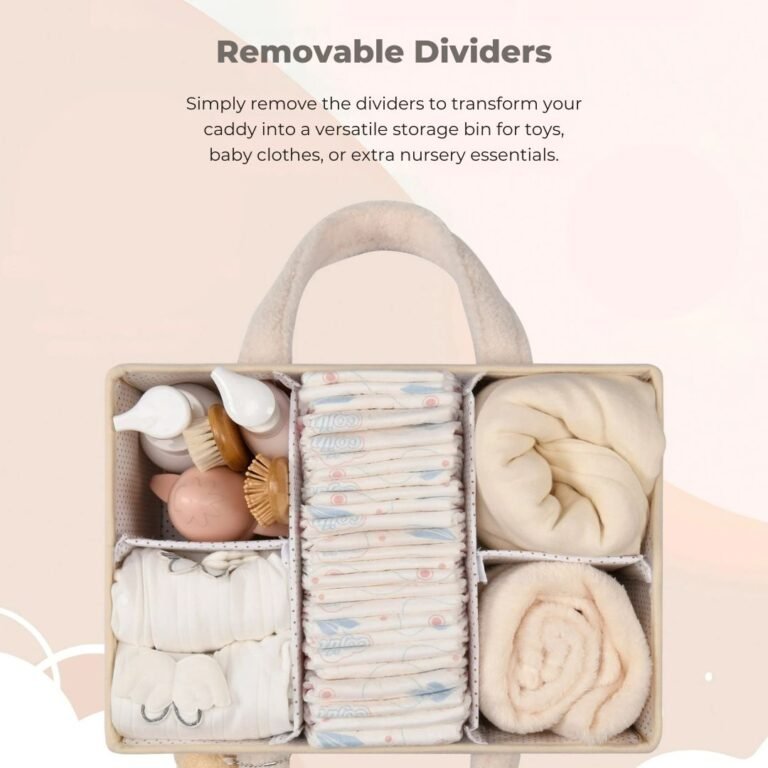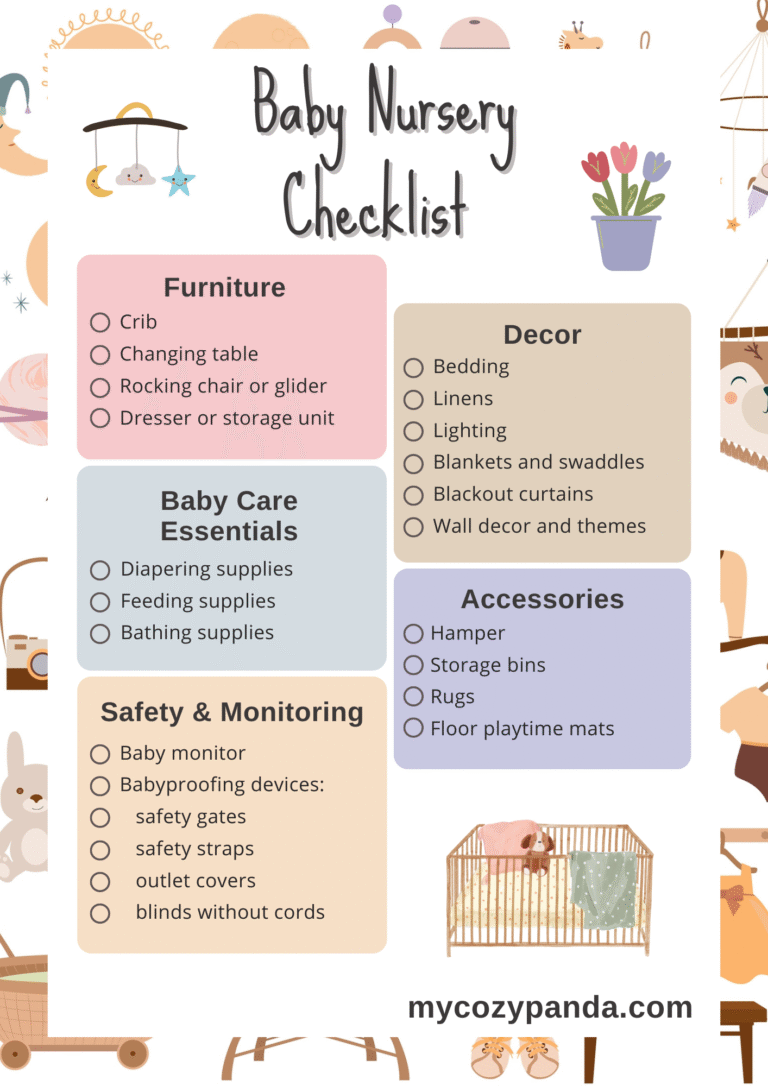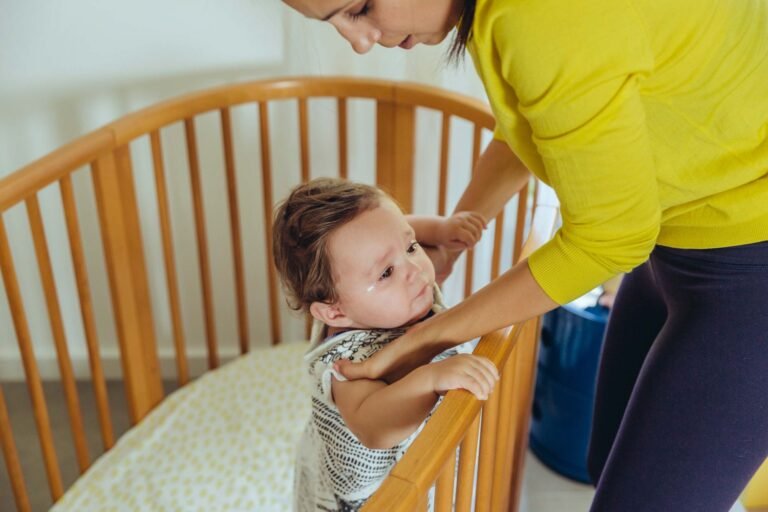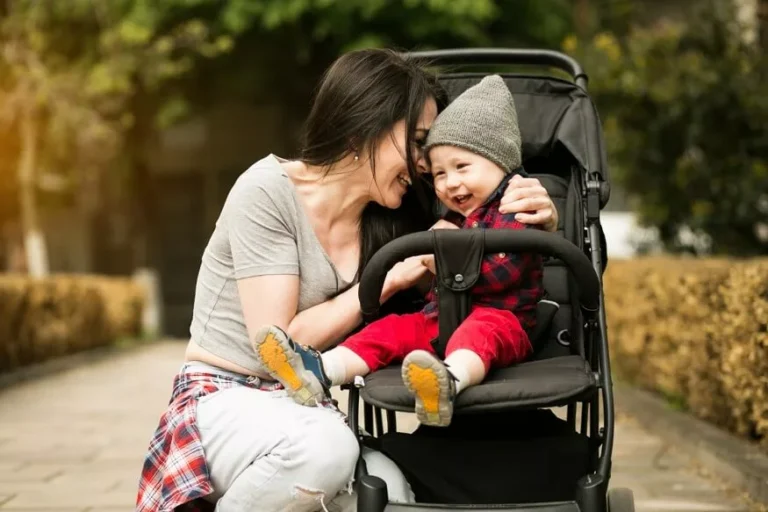Crib Safety Standards 2025: Essential Parent Guide
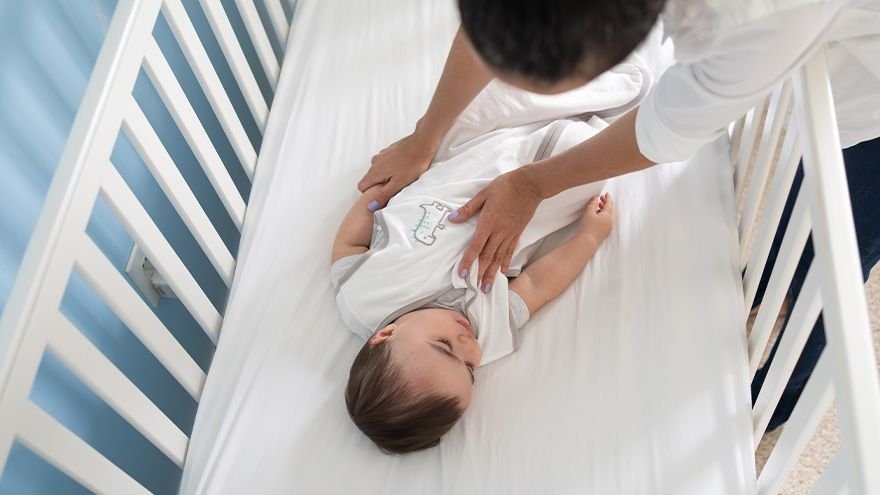
As a parent, ensuring your baby’s safety is your top priority, especially when it comes to their crib. It’s not just a piece of furniture; it’s where your little one spends countless hours sleeping and playing.
In 2025, crib safety standards have evolved to offer better protection and peace of mind for you and your family. But do you know what these new standards are? You might be surprised at the changes and innovations designed to keep your baby safe.
Imagine the relief of knowing that you’re choosing the safest options for your child’s sleep environment. Dive into this article to uncover the crucial crib safety standards that every parent should be aware of this year. Your baby’s safety may depend on it, and your peace of mind is just a few scrolls away.
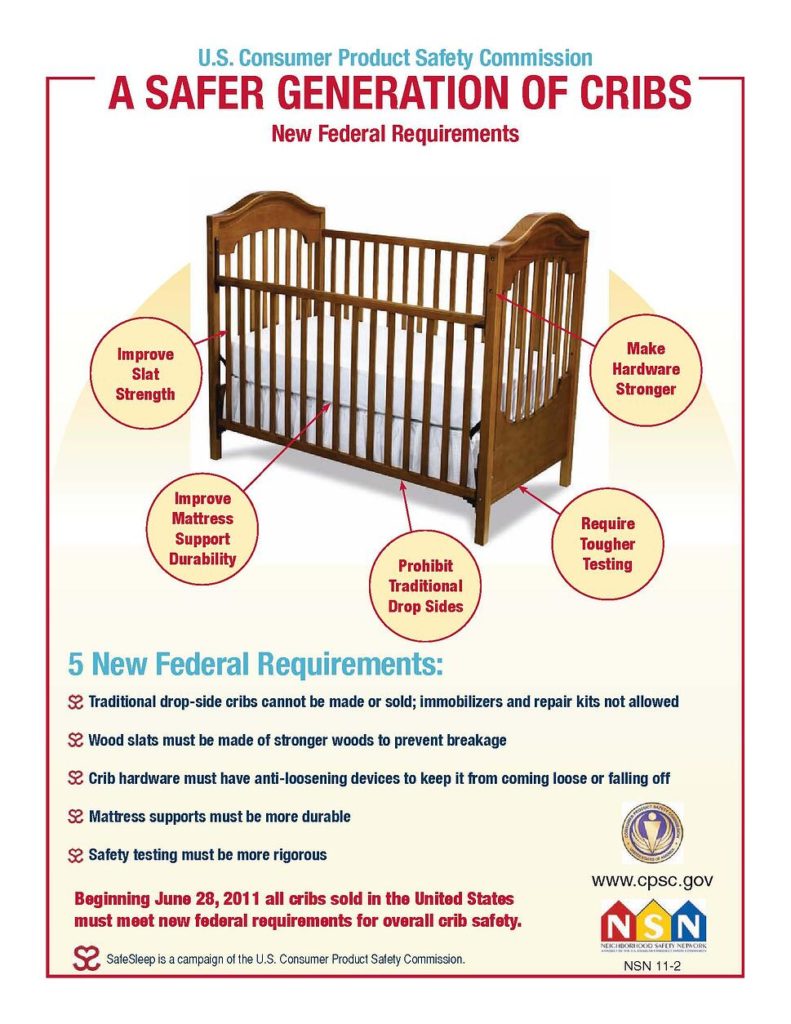
Credit: furnitureconcepts.com
Latest Crib Safety Standards
In 2025, crib safety standards are more important than ever. Parents want the best and safest sleep environment for their babies. New guidelines help ensure cribs are safe and secure. These updates focus on preventing accidents and improving crib design. Understanding these standards can protect your little one.
Non-toxic Materials
Cribs must use non-toxic materials. This reduces exposure to harmful chemicals. Paints and finishes should be free from lead and phthalates. These regulations protect infants’ health. Always check labels for compliance with safety standards.
Proper Slat Spacing
Slat spacing is crucial for crib safety. Gaps should be no wider than 2.375 inches. This prevents infants from slipping through or getting stuck. Inspect the crib regularly for loose slats. Safety is in the details.
Sturdy Mattress Support
A sturdy mattress support is a must. Ensure it is firm and well-fitted. A sagging mattress can pose risks. The mattress should not have gaps around the edges. Always use a mattress designed for your crib model.
No Drop-side Rails
Drop-side rails are no longer allowed. They can create dangerous gaps and traps. Modern cribs use fixed sides for safety. Choose designs that comply with this rule. Safety should never be compromised for convenience.
Durability And Stability
A crib must be durable and stable. It should not wobble or shake. Regularly check screws and joints for tightness. A sturdy crib provides a secure sleeping environment. This ensures peace of mind for parents.

Credit: www.mother.ly
Key Features Of Safe Cribs
Crib safety standards in 2025 prioritize sturdy construction and non-toxic materials. Ensure cribs have adjustable mattress heights. Check for secure slats and no sharp edges. Look for certifications that guarantee safety compliance. Prioritize these features to create a safe sleeping environment for your baby.
When preparing for a new baby, choosing a crib is one of the most important decisions you’ll make. Ensuring that your crib meets safety standards is crucial. In 2025, crib safety standards are more stringent than ever, emphasizing the key features every parent should be aware of. Understanding these features can help you make an informed decision that ensures your baby’s safety and your peace of mind.Durable Materials
A safe crib is made from durable materials. Look for cribs crafted from solid wood or high-quality metal. These materials provide stability and can withstand the test of time. Avoid cribs made from low-quality or composite materials that might break or warp. Imagine your little one grabbing onto the railings as they grow. You want those rails to remain sturdy and reliable.Secure Slat Spacing
Slat spacing is vital for your baby’s safety. Ensure the slats are no more than 2 3/8 inches apart. This prevents your baby from getting their head or limbs stuck between them. You can easily test this by attempting to fit a soda can through the slats. If it fits, the slats are too wide. This simple check can save you from potential hazards.Adjustable Mattress Heights
Adjustable mattress heights are a game-changer. As your baby grows, you’ll need to lower the mattress to prevent them from climbing out. Look for cribs offering multiple height settings for flexibility. Consider your own experience of bending over to pick up your baby. An adjustable mattress height can make this everyday task easier and safer for your back. Incorporating these features into your crib choice not only ensures safety but also adds convenience to your daily routine. Are you confident that your crib meets all these standards? Ensuring these elements in your crib will help create a safe haven for your little one.Identifying Certified Cribs
Ensuring your baby’s crib meets safety standards is crucial. Certified cribs offer peace of mind. They comply with regulations designed to protect your child. Knowing how to identify these cribs is essential for parents in 2025. This section will guide you through the process.
Certification Labels
Look for certification labels on cribs. These labels show the crib meets safety standards. Common certifications include ASTM and CPSC. These organizations test cribs for safety. A certified crib will have a visible label. This label is usually on the packaging or the crib itself. Check for this label before purchasing.
Testing Requirements
Certified cribs undergo rigorous testing. Testing includes checking the stability and durability. The crib must withstand pressure without breaking. Safety checks ensure no sharp edges are present. Testing evaluates the crib’s structure. It confirms the crib can safely hold a sleeping baby. Only cribs passing these tests receive certification.
Common Safety Hazards
Ensuring crib safety is crucial for your baby’s well-being. Parents should know common safety hazards to keep their child safe. These hazards can often be overlooked. Awareness and vigilance are key to avoiding them.
Loose Parts
Loose parts in a crib pose a significant risk. Babies can choke on small parts. Check for any loose screws or bolts regularly. Ensure all parts are securely fastened. A simple inspection can prevent accidents.
Toxic Paints
The paint on the crib should be non-toxic. Harmful chemicals can be present in some paints. These can affect your baby’s health. Always choose cribs with certified non-toxic finishes. Safe paint ensures a safe sleeping environment.
Improper Assembly
Improper assembly of the crib can lead to structural issues. This can cause the crib to collapse. Follow the manufacturer’s instructions carefully. Double-check that all parts are correctly placed. Proper assembly ensures crib stability.
Maintenance Tips For Crib Safety
Ensuring crib safety involves more than selecting the right crib. Regular maintenance plays a crucial role in keeping your baby safe. Proper care helps the crib last longer and prevents accidents. Simple routines can make a significant difference. Here are essential maintenance tips to follow.
Regular Inspections
Check the crib for loose screws or bolts weekly. Tighten them to ensure stability. Look for splinters or sharp edges. Sand them down to prevent injuries. Examine the crib mattress for sagging. Replace if it doesn’t fit snugly. Inspect the crib bars for gaps. Ensure they are secure and correctly spaced.
Proper Cleaning Methods
Clean the crib using mild soap and water weekly. Avoid harsh chemicals that may harm your baby. Wipe down all surfaces, including rails and slats. Use a soft cloth to prevent scratches. Let the crib dry completely before use. Clean the mattress cover regularly. Use a washable mattress protector for added safety.
Transitioning From Crib To Bed
Parents should stay updated on crib safety standards in 2025. New guidelines ensure safe transitions from crib to bed. Understanding these standards helps prevent accidents and provides a secure sleeping environment for children.
Transitioning your child from a crib to a bed is a significant milestone in their development. It’s a mix of excitement and anxiety for many parents. You want to ensure your child’s safety while fostering their growing independence. But how do you know when the time is right, and what should you consider when choosing that first bed?Signs Your Child Is Ready
Every child grows at their own pace, so it’s crucial to watch for specific signs indicating they’re ready for this transition. Have you noticed your little one trying to climb out of their crib? This can be a clear signal that they’re ready for more freedom. Another sign is if your child often asks about a big kid bed or shows interest when visiting friends or relatives who have one. Additionally, if your child is potty trained or in the process of learning, transitioning to a bed can make nighttime bathroom trips easier.Choosing The Right Bed
Safety is paramount when selecting your child’s first bed. Consider a toddler bed, which is lower to the ground and often comes with side rails for added safety. This can be a perfect intermediate step between a crib and a regular bed. However, if you opt for a twin-sized bed, be sure to install safety rails and position the bed away from windows. You might also want to place a soft rug beside the bed to cushion any falls. Look for a mattress that is firm yet comfortable, supporting your child’s growing body. Choosing the right bed isn’t just about safety; it’s also about creating a space where your child feels secure and excited to sleep. Encourage them to pick out bedding with their favorite colors or characters. What better way to embrace this new chapter than by involving your child in the decision-making process? As you navigate this transition, remember that patience and understanding are your best tools. Celebrate this leap towards independence with your child, and enjoy the many nights of peaceful sleep ahead.Resources For Parents
Ensuring your baby’s crib meets safety standards can be overwhelming. Thankfully, there are many resources available to guide you. These resources help parents make informed decisions. They ensure safety and comfort for your little one.
Trusted Brands
Many parents rely on well-known crib brands. These brands have a history of safety and quality. They often provide detailed safety information on their websites. Look for brands with good reputations. This can give you peace of mind.
Consumer Reports
Consumer Reports offers unbiased crib reviews. They test cribs for safety and durability. Their reports help you compare different crib models. You can access their findings online. This resource is invaluable for safety-conscious parents.
Parenting Forums
Parenting forums are great places to learn from other parents. Many share their experiences with different cribs. They offer insights on what works and what doesn’t. These forums can be a supportive community. You can ask questions and get honest feedback.

Credit: www.sheknows.com
Frequently Asked Questions
What Are 2025 Crib Safety Standards?
In 2025, crib safety standards focus on sturdiness, non-toxic materials, and proper spacing between slats. Ensure cribs meet ASTM and CPSC guidelines. Look for certifications indicating compliance with updated safety protocols to guarantee a secure sleep environment for your baby.
How To Ensure A Crib Is Safe?
Check for a stable frame and non-toxic finishes. Ensure slats are no more than 2-3/8 inches apart. Avoid drop-side cribs and ensure all hardware is securely fastened. Regularly inspect for wear and tear to maintain safety.
Are Used Cribs Safe In 2025?
Used cribs might not meet current safety standards. Always verify they comply with 2025 guidelines. Check for recalls and inspect for missing parts or damage. Ensure they haven’t been modified in a way that compromises safety.
What Materials Are Safe For Cribs?
Opt for cribs made from solid wood with non-toxic finishes. Avoid cribs with sharp edges or splinters. Ensure that all materials are BPA-free and phthalate-free to protect your baby’s health.
Conclusion
Crib safety is crucial for your baby’s well-being. Understanding standards ensures peace of mind. Regular checks keep the crib safe and secure. Look for sturdy rails and proper mattress fit. Avoid decorations that pose risks. Safety standards evolve, so stay informed.
Your baby’s comfort and security depend on these practices. Be proactive in maintaining crib safety. Prioritize your child’s sleep environment. Parents play a key role in ensuring safety standards. Remember, a safe crib is a happy crib. Keep your little one safe and sound.
Sleep time is precious; make it worry-free.

